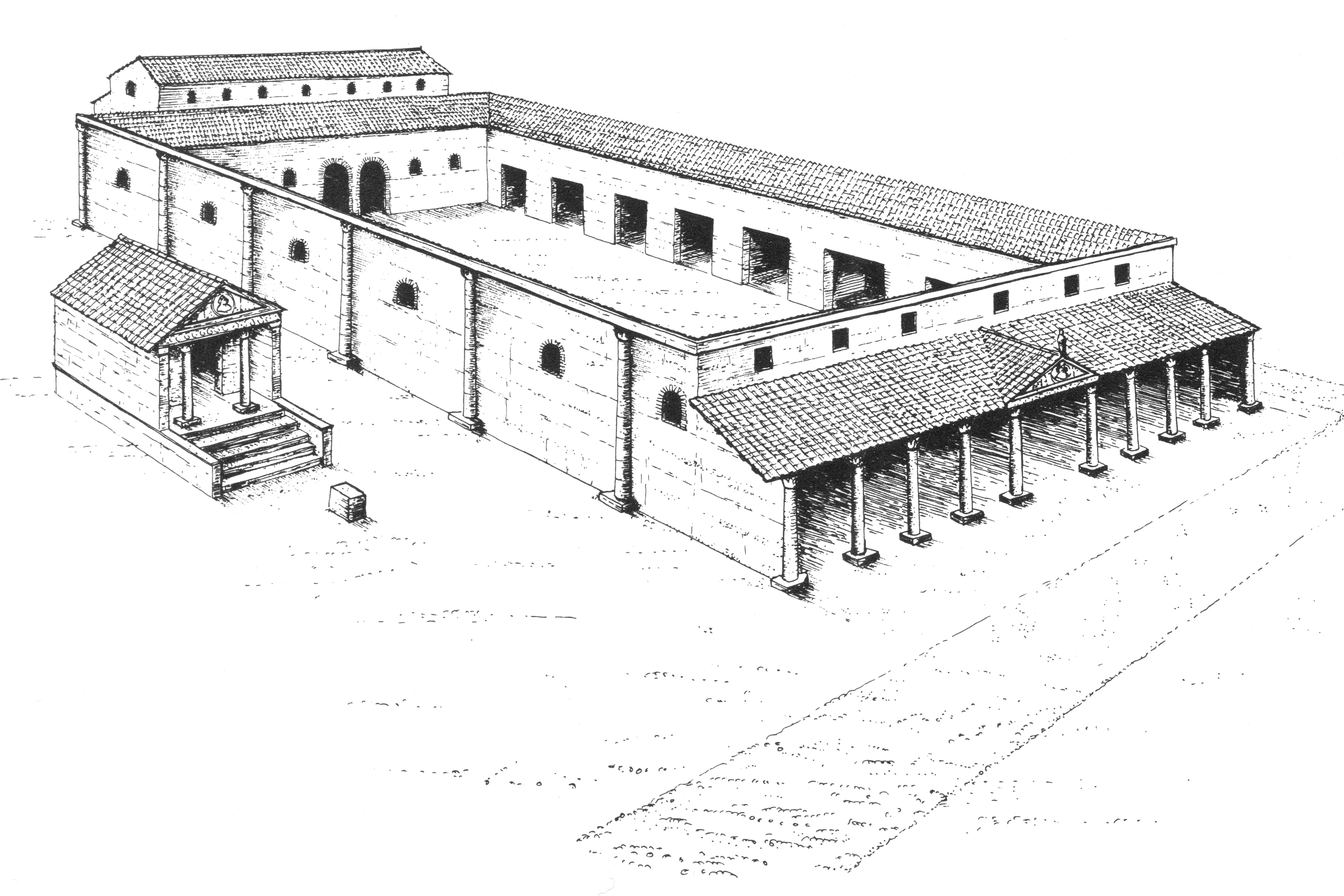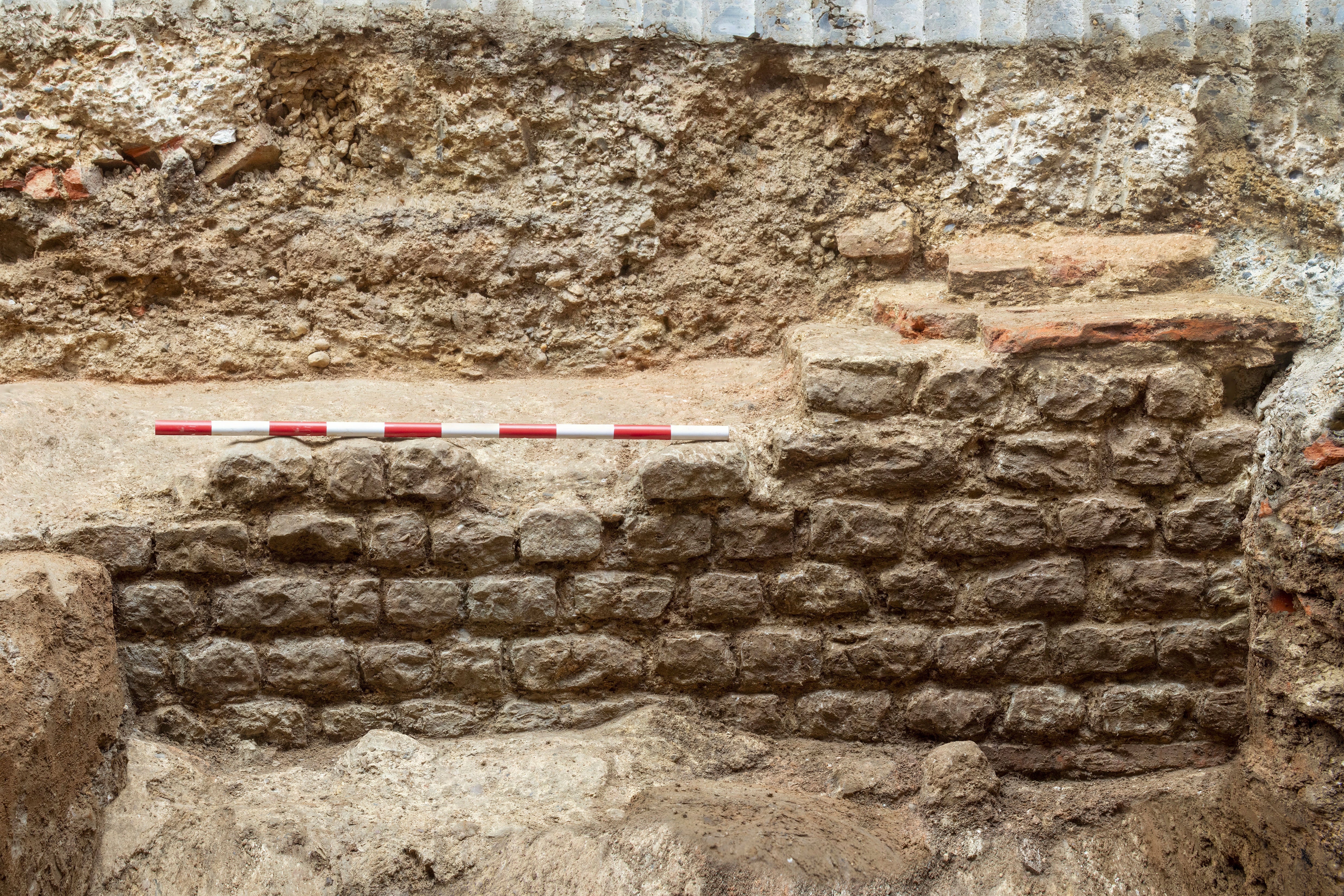Beneath the foundations of a planned 32-story skyscraper in London, archaeologists have unearthed a remarkable vestige of the city’s Roman past: the remains of a basilica that once stood at the heart of Londinium.
The discovery, announced on Thursday, offers a glimpse into the city’s ancient origins, juxtaposing the modern drive for vertical expansion with the enduring presence of history beneath our feet.
Excavations at 85 Gracechurch Street, in the heart of London’s financial district, revealed substantial flint, brick, and ragstone walls and foundations, some measuring up to 1 meter wide and 4 meters deep. These two-millennia-old remnants are believed to be part of a two-story basilica, nearly the size of an Olympic swimming pool, constructed between 78 and 84 AD. This period marks a few decades after the Roman invasion of Britain and two decades after the rebellion led by Queen Boudicca.
Sophie Jackson of the Museum of London Archaeology hailed the find as “one of the most significant discoveries” in recent years within London’s oldest quarter, the City. This square-mile area, now dominated by modern skyscrapers, sits atop layers of history, from Victorian and medieval structures to these newly discovered Roman remains.
The basilica formed a key part of the Roman forum, the bustling center of Londinium’s social, political, and commercial life. It was a place where citizens gathered to shop, socialize, seek justice, and receive pronouncements from political leaders.

The unearthed foundations are thought to belong to the tribunal, a raised platform within the forum where officials made decisions concerning the city’s governance. This discovery provides valuable insights into the workings of Roman London and underscores the rich historical tapestry that lies beneath the modern cityscape.
“It’s the beating heart of the city,” said Andrew Henderson-Schwartz, head of public impact at Museum of London Archaeology. “It kind of towers above the city. And so it’s a real symbol of Roman power and authority.
“We’re talking about the early stages of London here, but it’s a real sign of investment in the city, even in its early infancy,” he said.
Developer Hertshten Properties, which owns the site and has planning permission for a new office tower, has agreed to incorporate the remains into its plans and put them on display in a visitor center.
Henderson-Schwartz said the extent of the “absolutely massive” foundations discovered in several test pits suggests an “extraordinary” level of preservation.

Further digging could answer intriguing questions, including why the original forum was only used for 20 years before being replaced by a much larger one, which remained in use until the collapse of Roman rule in Britain three centuries later. Items such as writing tablets, styluses — even ancient trash — could give glimpses into the daily lives of Roman Londoners.
Property developers in Britain routinely have to consult archaeologists as part of their planning process, a practice that has uncovered finds from Saxon jewelry to medieval ice skates to the skeletons of 14th-century plague victims.
The latest discovery adds to the scant traces of Roman London that can be seen around the city, including a section of ancient wall, a portion of amphitheater beneath the Guildhall and a temple to the god Mithras which lies incongruously under the modern headquarters of information company Bloomberg.
“We do have these little windows into Roman London that are all over the city,” Henderson-Schwartz said. “But this is really in some ways the site that connects them all together. This is the heart of Rome in London, where all the decisions were made.”



